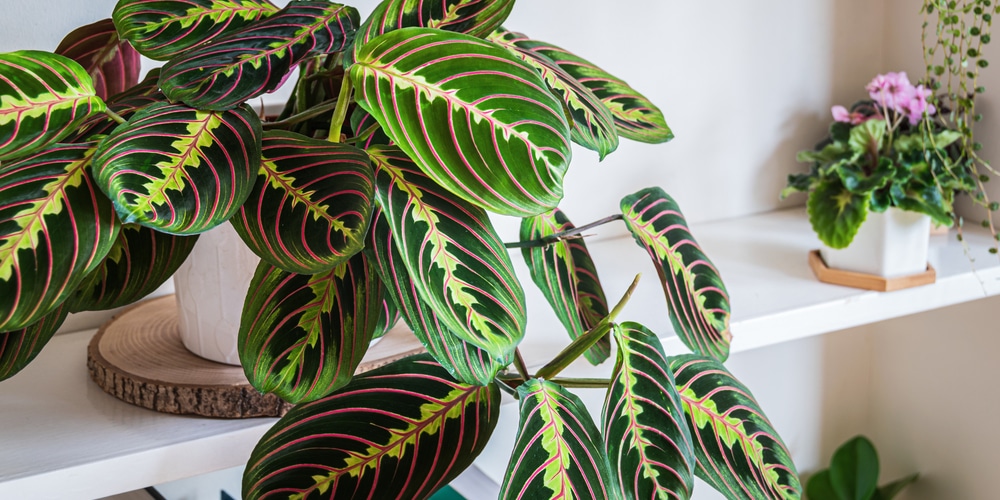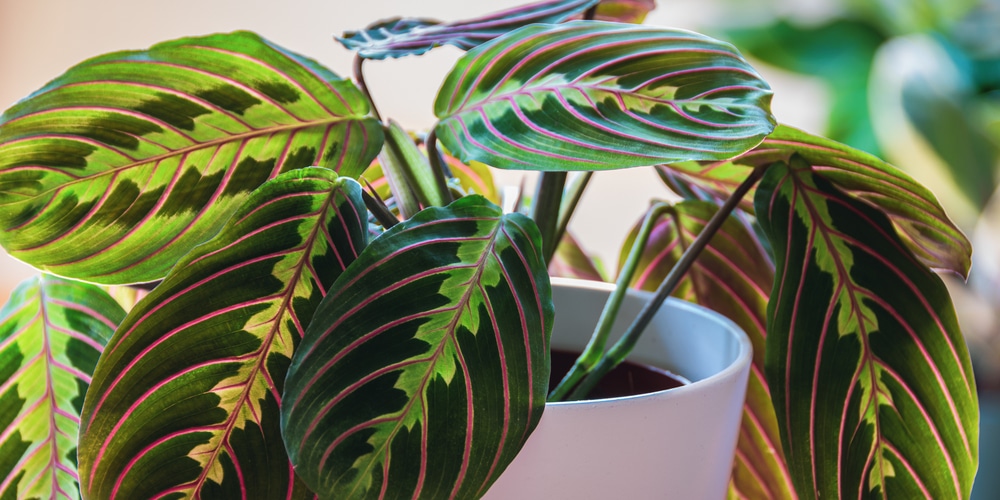If you’re looking for an interesting and easy-to-care-for houseplant, look no further than the prayer plant. This beautiful plant is known for its large leaves that fold up at night as if in prayer. There are several methods of propagation that will work well for this lush green houseplant.
In this article, we’ll discuss the best ways to propagate prayer plants so you can have more of them growing in no time. Let’s get started!
Growing A Prayer Plant
The prayer plant (Maranta leuconeura) is a beautiful, easy-to-care-for houseplant that gets its common name from the way its leaves fold together at night, giving them the appearance of praying hands. Prayer plants are known for their ability to thrive in high humidity and low light conditions.
Prayer plants prefer indirect light and will do best if not placed in direct sun. Prayer plants like to be kept evenly moist but not soggy when it comes to watering.
Allow the top inch or so of soil to dry before watering again. If you forget to water your prayer plant for a while and the leaves start to droop, don’t worry – they will bounce back quickly once they are watered.
Prayer plants are relatively low-maintenance houseplants but will benefit from being fertilized monthly or so during the growing season. Feed your plant with a half-strength liquid fertilizer or add slow-release pellets to the potting mix. With proper care, your prayer plant will thrive and bring beauty and life into your home for years to come.
Propagating A Prayer Plant
Now that you know a little about prayer plants let’s discuss the best ways to propagate them.
Prayer plants can be propagated by several methods, including water propagation, soil propagation, and division.
How To Do Water Propagation
Water propagation is a simple and efficient way to propagate plants. By taking a cutting from an existing plant and placing it in water, you can quickly produce a new plant that is genetically identical to the parent. Water propagation is especially well suited to fast-growing plants such as ivy, philodendron, pothos, and prayer plants which can produce roots in as little as one week.
Step-by-step procedure:
Step 1
When propagating prayer plants, cutting the stem below the node is important. Nodes are small bumps on the plant where new leaves and growth develop.
Cutting below the node will encourage the plant to produce new roots. When cutting the stem, be sure to leave about half an inch of stem below the node. This will give the plant enough material to produce new roots. With a sharp knife or shears, cut cleanly through the stem just below a node.
Step 2
Once you have your cutting, it’s time to prepare the water. Fill a clean jar or vase with room-temperature water and add a small amount of liquid houseplant fertilizer.
If tap water is used, let it sit for 24 hours so the chlorine can evaporate. Now it’s time to pop your cutting in the water. Ensure the nodes are submerged, and the leaves are above the waterline.
You can trim off a few leaves if necessary; this will help the plant focus its energy on producing roots. Place your jar in a spot out of direct sunlight and keep an eye on the water level, adding more as needed. In just a few weeks, you’ll see new roots forming.
Step 3
If the conditions are not ideal, you can bag your cutting. This will help to create a humid environment around the plant, which is ideal for root development.
To do this, place your cutting and jar of water in a clear plastic bag and seal it shut. Place the bagged plant in indirect sunlight and check on it daily, adding more water as needed. You can also mist the plant periodically to help keep the humidity high.
After a few weeks, you’ll see new roots developing, and your plant will be ready to pot up.
Step four
Change the water as needed to keep it fresh, and in a few weeks, your plant will develop roots and be ready to pot up. When the roots are about an inch long, it’s time to transplant your prayer plant into some potting mix.
Be sure to use a well-draining mix such as peat moss or coco coir mixed with perlite. Transplant the plant into a pot slightly larger than the root ball and water the well. Allow the top inch of soil to dry out between watering.
How To Do Soil Propagation
Soil propagation is the process of using soil to create new plants. It is a great way to propagate prayer plants because it is easy and requires no special equipment. The first step is to fill a planting container with sterile potting mix.
Next, moisten the mix and make a small hole in the center. Take a healthy prayer plant cutting and insert it into the hole, ensuring the leaves are above the soil line.
Once the cutting is in place, water it well and then place the container in a shady spot; within a few weeks, the cutting should develop roots and grow. With a little effort, you can easily propagate prayer plants using soil.
How To Do Propagation By Division
Many houseplants can be propagated by division, a simple process of replanting a section of the parent plant. Prayer plants are no exception. They are relatively easy to propagate by division and often produce new growth within a few weeks.
The best time to divide prayer plants is in the spring when they are actively growing. To divide a prayer plant, choose a healthy section of the plant and carefully dig it up.
Once you have removed the section from the pot, gently separate the roots and replant them in a new pot filled with fresh potting mix—water well and place in a bright, warm location. With proper care, your new prayer plant should quickly start to produce new growth.
Conclusion
Prayer plants are relatively easy to propagate, whether you use water, soil, or division. The best time to propagate prayer plants is in the spring, when they are actively growing. You can easily produce new plants to add to your collection with a little effort.


